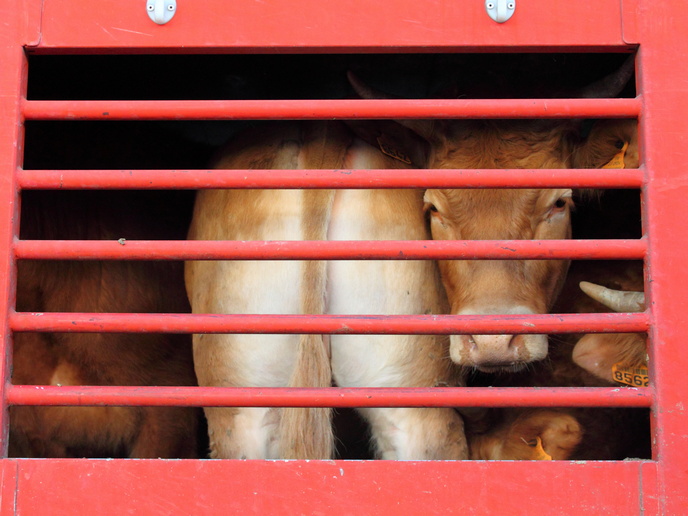Study to beef up calf transportation
Unweaned calves intended for beef production are transported over long distances in their first few weeks of life. This exposes them to stressful handling, food and water deprivation, and temperature changes. A new study supported by the HoloRuminant project explores some of the ways in which these challenges are currently tackled, outlining the potential benefits for both calf welfare and industry productivity. In the dairy industry, calves are separated from their mothers shortly after birth. The calves that will not be reared as dairy cows – known as non-replacement dairy calves – can then be raised for veal or beef. This is where the long journey begins for these unweaned calves, which are collected from different farms and transported to a reception centre and then on to fattening facilities. Owing to their underdeveloped gastrointestinal tract and immune system, these calves are consequently more susceptible to diseases. An abstract published by HoloRuminant project partner Spanish National Research Council (CSIC) reports: “Although animal welfare requirements linked to transport are regulated by the EU, low standard practices may still occur. Monitoring the hematological response of calves to transportation can provide valuable information for improving animal management and transportation conditions, as well as for early identification of calves at a higher risk of disease onset. This, in turn, can mitigate the risk of poor performance at the fattening facilities.”
Blood will tell
To assess how calves responded to long-distance transportation, CSIC researchers evaluated the effect this had on the calves’ blood parameters. The researchers collected blood samples at the reception centre and at the fattening facilities, following 12 hours of travel. Calves were fed milk replacer 4 hours before departure and had access to water inside the truck during the rest hour, after 9 hours of travel. The animals were also provided with straw for bedding, and the temperature was monitored throughout the journey. After comparing the samples collected at the reception centre with those at the fattening facilities, the research team noted mild symptoms of dehydration and hypoglycaemia. However, no major differences were observed in indicators of energy metabolism, muscle injury or muscle fatigue, stress or immunological state. “These findings suggest that the transportation of calves under the conditions of this study did not cause remarkable alterations in the health of the animals beyond the effects of a 16-hour fast,” the abstract states. This suggests that appropriate management guidelines were followed at the reception centre and during transportation. The abstract includes several recommendations in line with EU legislation on animal protection during transport. They are: minimising extended transportation; ensuring optimal health; verifying fitness for transport; limiting journey duration to at most 8 hours; maintaining adequate conditions in the vehicle; and promoting good practices.
A platform for collective change
The HoloRuminant (Understanding microbiomes of the ruminant holobiont) project has also launched a dynamic forum called the International Stakeholder Platform (ISP). Through the ISP, experts, policymakers and industry representatives share insights and together shape the future of microbiome applications in ruminant production. Interested parties are invited to join the ISP by subscribing to the HoloRuminant mailing list as a stakeholder. For more information, please see: HoloRuminant project website
Keywords
HoloRuminant, calf, transport, reception centre, fattening facility, beef, animal



